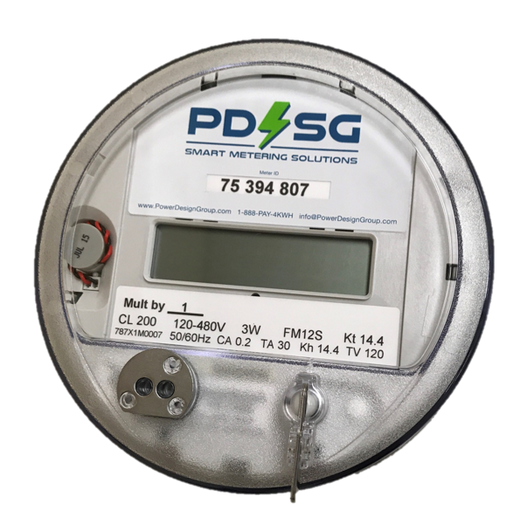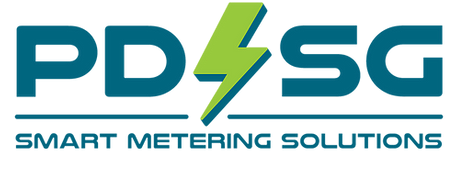 There are two ways to power a cellular site or node, either through the local utility providing a direct metered service, or by tapping the landlord’s power. Securing a meter from a utility can be expensive and time-consuming and using the landlord’s power with a submeter that is read by either the landlord or the carrier can provide its own set of headaches.
There are two ways to power a cellular site or node, either through the local utility providing a direct metered service, or by tapping the landlord’s power. Securing a meter from a utility can be expensive and time-consuming and using the landlord’s power with a submeter that is read by either the landlord or the carrier can provide its own set of headaches.
In both cases, submeters can provide benefits for carriers. A submeter is a utility-grade electricity meter that is installed after the main service to monitor usage for a specific tenant. All cell sites can be submetered: including co-locations or standalone sites, and towers or rooftops.
Submeters monitor energy usage, so the carrier can reimburse the landlord or utility for power. Compared with a traditional direct utility meter, a submeter can be deployed at a cell site with less administrative red tape and expense. When a carrier taps the landlord’s power for a cell node, submeters are necessary to track electricity usage.
Power Design and Supply Group (PDSG), which was founded in 2005, provides smart submetering solutions to the telecom industry, including wireless carriers, tower companies and infrastructure firms. PDSG’s smart meters have integrated cellular data modules for remote software connectivity. PDSG wirelessly reads its submeters at cell sites and helps carriers to monitor their usage and then reimburse their landlords when they’re tapping building power. The firm provides the smart meters and performs the ongoing monthly reading and reporting services. If needed, they can perform the installation as well.
Things can go wrong when a carrier taps the landlord’s power for a cell site and the building management is tasked with reading the meter and sending them a bill, according to Buddy Wachsmuth, PDSG Director of Client Services. In one case, building management changed and the meter was left unread for five years. By the time the error was discovered, there was a big electric bill and some frazzled nerves. PDSG was brought in to install a smart submeter and get the landlord and tenant on the same page.
“We were able to get the landlord reimbursed for the unpaid back usage by performing a load study at this site and analyzing past utility electric bills from the building to determine the amount owed,” Wachsmuth said. “After that, we worked with both the carrier and the landlord to establish a new monthly reporting system that worked for both parties. This completely repaired their relationship.”

Today, cellular antennas are deployed on the sides and rooftops of university buildings, hospitals, and government buildings — virtually any structure that is at the proper location for coverage. That means the submeters can be located on roofs, basements or other places that are difficult to access without alerting the building supervisors or management.
“With hundreds of thousands of cell sites, the carriers cannot manually read the electric meter on every single one,” Wachsmuth said.
While conventional submeters are read manually, many smart submeters can be read remotely. All of the submeters that PDSG has deployed are “smart” and are read remotely from the firm’s national headquarters, which eliminates the need for accessing the site to read the meter physically. Each PDSG meter is equipped with an internal communications module with an air card, which allows it to be read remotely via cellular connection, using a standard IP address.
The PDSG system is set up to wirelessly read the meters on a daily basis, so a full, historic log of electrical use can be maintained for all the carriers at the various sites. It provides a highly customizable monthly usage report that is sent directly to the carriers’ utility departments and their third-party utility management companies used for landlord reimbursement of utility payments.
“The greatest thing valued by the carriers, in our experience over the last decade, has been the hands-off nature of our service,” Wachsmuth said. “We handle the administrative setup and make sure that the carriers are able to receive our bills and reimburse their landlords, without having any discourse or interaction with them.”
PDSG is Growing with the Tower Industry
PDSG is headquartered in Clifton, NJ, 10 minutes outside of the New York City metro area. Its first major deployment was 300 sites for Metro PCS in the New York Metro market.
“We’ve gotten a lot of growth here in the New York market, and we’re starting to see carriers in the greater Boston area adopting submeters,” Wachsmuth said. “And we’ve also seen, out of the blue, a flood of jobs in Northern California. So far, PDSG has deployed smart submeters on thousands of cell sites in more than 30 states across the country, from New York City, Boston, Philadelphia and Atlanta to Phoenix, Denver, Chicago and San Francisco.”
“We’re experiencing growth, moving into new markets and working with new tower companies, but it definitely seems to be more prevalent right now in the major cities,” Wachsmuth said. “We have been very fortunate to work and partner with companies, such as American Tower, Crown Castle International and SBA Communications, which have plugged us into quite a few markets around the country.”
PDSG’s priority right now is to continue expanding into new markets, finding new opportunities in places where the carriers are building out their coverage areas, whether it is small cells, DAS or rooftops in urban areas and or rural macro towers. Wireless internet service providers are also a new avenue for the company’s growth.
“Our products and services are battle tested,” Wachsmuth said. “We’re already proven within the industry, and we’re working with all the carriers and tower companies and infrastructure firms. It’s not a matter of proving that the system works. It’s a matter of just getting it in front of the right people.”
PDSG offers volume discounts on bulk orders. And if the firm is brought in early in a carrier’s build plans, it can negotiate lower pricing.
“We see opportunities working with site acquisition firms and A&E firms to get specified into new builds,” he said. “Some tower companies are already spec-ing our smart submeters into their plans and drawings.”
One carrier that is doing a lot of greenfield sites is Dish Network, which is joining the race as the fourth facilities-based national wireless carrier. “They’ve got an exciting new buildout coming up, and we’re hoping to work with them,” Wachsmuth said.
Mention Coupon Code “TOWERS2021” for 10% off your first order (Before October 1st, 2021).
For more information, visit https://www.powerdesigngroup.com/, or reach out to Buddy Wachsmuth via phone at 631-578-3136, or by email at [email protected].




Reader Interactions